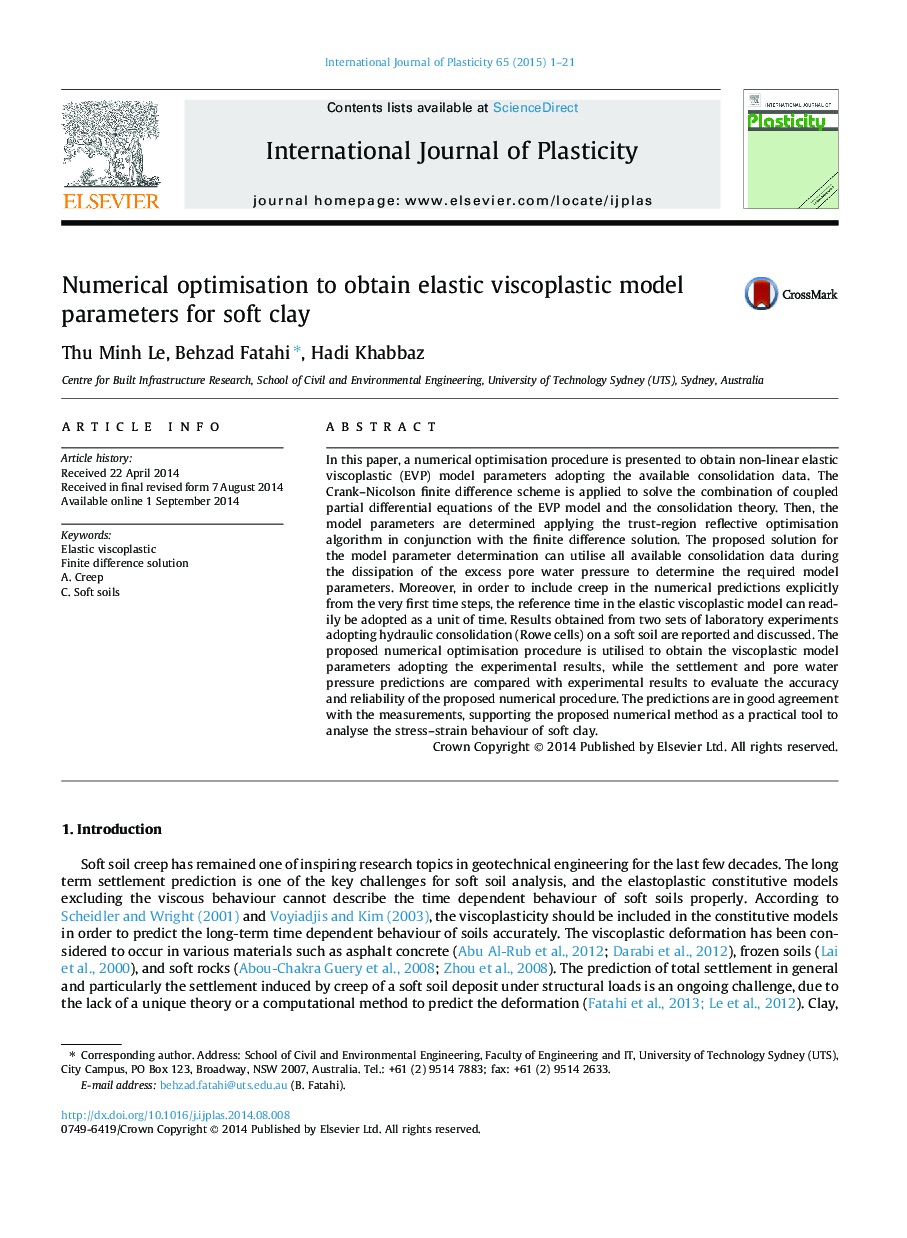| Article ID | Journal | Published Year | Pages | File Type |
|---|---|---|---|---|
| 786105 | International Journal of Plasticity | 2015 | 21 Pages |
•Introduce a new model parameter determination method for elastic viscoplastic model.•Adopt time parameter as unit of time to produce a viscous-free reference time line.•Utilise consolidation data during dissipation for model parameter determination.•Conduct multistage loading tests for two samples of different thickness.•Good agreement between predictions and the experimental results is achieved.
In this paper, a numerical optimisation procedure is presented to obtain non-linear elastic viscoplastic (EVP) model parameters adopting the available consolidation data. The Crank–Nicolson finite difference scheme is applied to solve the combination of coupled partial differential equations of the EVP model and the consolidation theory. Then, the model parameters are determined applying the trust-region reflective optimisation algorithm in conjunction with the finite difference solution. The proposed solution for the model parameter determination can utilise all available consolidation data during the dissipation of the excess pore water pressure to determine the required model parameters. Moreover, in order to include creep in the numerical predictions explicitly from the very first time steps, the reference time in the elastic viscoplastic model can readily be adopted as a unit of time. Results obtained from two sets of laboratory experiments adopting hydraulic consolidation (Rowe cells) on a soft soil are reported and discussed. The proposed numerical optimisation procedure is utilised to obtain the viscoplastic model parameters adopting the experimental results, while the settlement and pore water pressure predictions are compared with experimental results to evaluate the accuracy and reliability of the proposed numerical procedure. The predictions are in good agreement with the measurements, supporting the proposed numerical method as a practical tool to analyse the stress–strain behaviour of soft clay.
